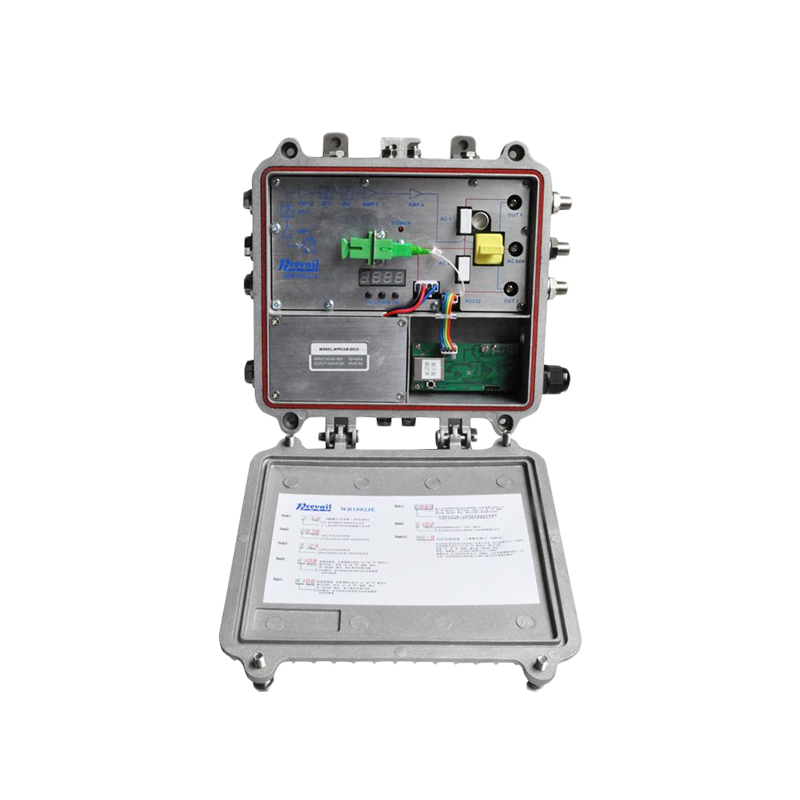How does HFC transmission equipment become a key pillar of modern communication networks?
In today's information society, communication networks have become an important pillar of human life and economic activities. Among many communication technologies, HFC (Hybrid Fiber-Coaxial) transmission technology is widely used in broadband networks, TV broadcasting and data transmission due to its high efficiency, stability and flexibility. HFC transmission equipment is the core component of this technology system, and it plays an important role in improving data transmission capabilities and optimizing network performance.
HFC transmission equipment is a hardware facility based on hybrid transmission technology of optical fiber and coaxial cable. HFC network combines the high-speed transmission capability of optical fiber and the flexible access advantage of coaxial cable, and can provide users with a variety of services in an efficient way, including broadband Internet, TV signals and voice communications.
Typical HFC transmission equipment includes the following parts:
Fiber Node
The fiber node is a key part of the HFC network, which is used to convert optical signals into radio frequency (RF) signals or vice versa. It connects the backbone optical fiber network with the coaxial cable network at the user end to achieve efficient signal distribution.
Amplifier
The amplifier is used to enhance the signal strength to ensure that the signal quality will not be significantly attenuated during long-distance transmission.

Splitters and Taps
These devices distribute signals to multiple user points, supporting large-scale user connections.
Customer Premises Equipment (CPE)
Includes user-end equipment such as modems and set-top boxes, which are used to receive and decode signals transmitted by HFC networks.
Advantages of HFC transmission equipment
High bandwidth and high speed
HFC networks use the high-speed transmission capacity of optical fiber to extend the bandwidth of the backbone network to the user end. At the same time, improved coaxial cables can support multi-Gbps data rates to meet modern users' needs for high-quality streaming and online services.
HFC transmission equipment is designed with strong anti-interference capabilities and can maintain stable signal transmission even in high-density user environments. This makes HFC technology a reliable choice, especially in TV broadcasting and broadband networks.
HFC networks can be flexibly expanded according to demand, from supporting small communities to covering large urban areas. By upgrading transmission equipment, network operators can gradually increase system capacity without completely replacing infrastructure.
HFC transmission equipment supports the integrated transmission of voice, data and video, allowing users to enjoy multiple communication services through a single connection. This multifunctional feature reduces the cost of network deployment and improves the convenience of services.
HFC networks are widely used in home broadband access and cable TV services. With HFC transmission equipment, users can enjoy a seamless experience of high-speed Internet and high-quality TV signals.
In enterprise environments, HFC transmission equipment supports high-bandwidth data transmission requirements and is suitable for scenarios such as video conferencing, big data processing, and cloud service access.
HFC transmission equipment also plays an important role in smart city construction, including public Wi-Fi coverage, smart monitoring, and connection of IoT devices.
HFC networks provide reliable communication support for distance education and telemedicine, ensuring the real-time and stability of data transmission.
Despite the obvious advantages of HFC networks, with the reduction of optical fiber costs and technological advances, many operators have begun to transition to FTTH architecture. However, HFC transmission equipment will still play a complementary role in the long run, especially in the process of upgrading existing networks.
With the rise of 5G and the Internet of Things, HFC transmission equipment is being upgraded to support higher data rates and more connected devices. For example, the introduction of DOCSIS 4.0 technology has further improved the performance of HFC networks.
In the future, HFC transmission equipment will pay more attention to energy-saving design, reduce energy consumption, and improve the service life and recyclability of equipment, in line with the goal of sustainable development.
As an important part of modern communication networks, HFC transmission equipment provides reliable support for a variety of services with its high bandwidth, stability and flexibility. Although the popularity of fiber-optic networks in the future will pose certain challenges to HFC technology, HFC transmission equipment will still play an irreplaceable role in many fields in the short and medium term. With the continuous development of technology, HFC transmission equipment will play a more important role in more efficient and greener communication networks, providing strong support for the digital transformation of society.

















